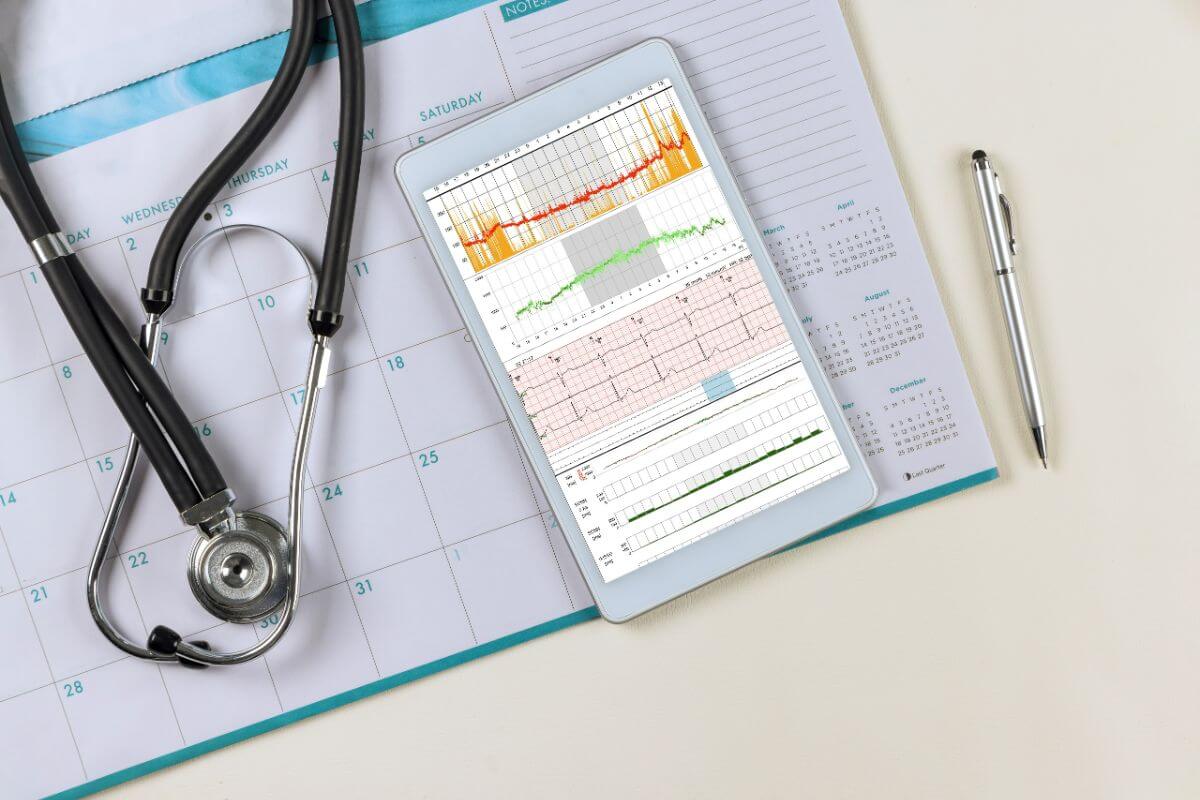A coronary angiogram is the most common type of cardiac catheterization procedure. This is a medical procedure that is used to diagnose and treat heart and blood vessel conditions. It involves the insertion of a thin, flexible tube called a catheter into a blood vessel in the arm or groin area which is then threaded up to the heart.
What is a Coronary Angiogram For?

A coronary angiogram allows doctors to view your heart’s blood vessels using x-ray imaging. It’s done to see if there are any restrictions in blood flow to and from the heart.
During the procedure, a type of contrast dye that can be seen through an x-ray machine is injected through the catheter and into the blood vessels of the heart. The x-ray machine then rapidly takes several images called angiograms, providing the doctor with a look at the blood vessels. Sometimes, the doctor might open clogged arteries during your coronary angiogram—this is called angioplasty.
An angiogram will show doctors if there is anything wrong with your blood vessels, and if so, what the issue is. They can show how many of your coronary arteries are blocked or narrowed by fatty plaques, where these blockages are, and how much blood flow is blocked. If you’ve had coronary bypass surgery, an angiogram can check the results of this, too.
When Would a Doctor Recommend a Coronary Angiogram?

Certain symptoms could indicate that you need a coronary angiogram. Your doctor might recommend one if:
- You have symptoms of coronary artery disease, like chest pain
- There is a pain in your chest, jaw, neck, or arm that can’t be explained by other tests
- You have new or increasing chest pain
- You have a congenital heart defect or disease
- You received abnormal results on a noninvasive heart stress test
- You have a heart valve problem that requires surgery
- You have certain other blood vessel problems or a chest injury
There is a risk involved when doing an angiogram, so it isn’t usually done until after noninvasive heart tests have been performed. Some of these tests might include an electrocardiogram, an echocardiogram, or a stress test.
If you need an angiogram, have it done at the best hospital in Las Pinas, Perpetual Help Medical Center – Las Pinas. Our heart surgeons and doctors are experts in the field of cardiology and surgery who will ensure the success of your angiogram. Their success rates at the Cardiovascular Operating Room and Catheterization Laboratory of our Heart and Vascular Institute speak for themselves.
What are the Risks Involved?
Most procedures done on the heart and blood vessels come with risks involved. In the case of coronary angiograms, one risk could be radiation exposure from the x-rays used. On the other hand, major complications are rare, but they can include:
- Heart attack
- Stroke
- Injury to the catheterized artery
- Irregular heart rhythms or arrhythmias
- Allergic reactions to the dye or medications used in the procedure
- Kidney damage
- Excessive bleeding
- Infection
How to Prepare for a Coronary Angiogram
As we mentioned above, there are some risks to performing a coronary angiogram. However, these risks can be avoided or mitigated with proper preparation. While in some cases, coronary angiograms are performed on an emergency basis, more often they are scheduled in advance, which gives you time to prepare.
Angiograms are performed in the catheterization lab of a hospital. You will be given specific instructions such as:
- Don’t eat or drink anything after midnight before your angiogram.
- Take all your medications with you to the hospital to show your doctor.
- Get clearance from other doctors (such as an endocrinologist if you have diabetes) before the procedure.
Immediately before the procedures, you’ll need to empty your bladder and change into a hospital gown. You might also be required to remove contact lenses, eyeglasses, jewelry, and other accessories.
What to Expect After the Procedure is Done
Post-angiogram, you’ll be taken to a recovery area before being returned to your own room to be monitored. You may be able to go home the same day, or you might have to remain in the hospital. Drinking plenty of fluids will flush out the dye from your body, and eating will replenish your energy once you feel able to.
Ask your doctor when to resume taking medications, bathing or showering, working, and doing other normal activities. Strenuous activities and heavy lifting should be avoided for several days, and the puncture site might remain tender for a while.
When to Call Your Doctor Post-Angiogram

If you notice symptoms like bleeding, new bruising or swelling, signs of infection, or increasing pain or discomfort at the puncture site, it’s best to see a doctor and have it checked. Do this also if there is weakness, numbness, or a change in temperature or color of the arm or leg used for the procedure. Finally, if you develop chest pain or shortness of breath, see your doctor.
Key Takeaway
A coronary angiogram may not be something done regularly, and it might only occur if other noninvasive tests cannot pinpoint what is wrong. But should you ever require one, it’s best to be prepared and know what to expect.
Contact us today at PHMC-Las Pinas to ask about our different treatment plans and services! You can also set an appointment with our skilled and qualified doctors for any pressing health concerns.

